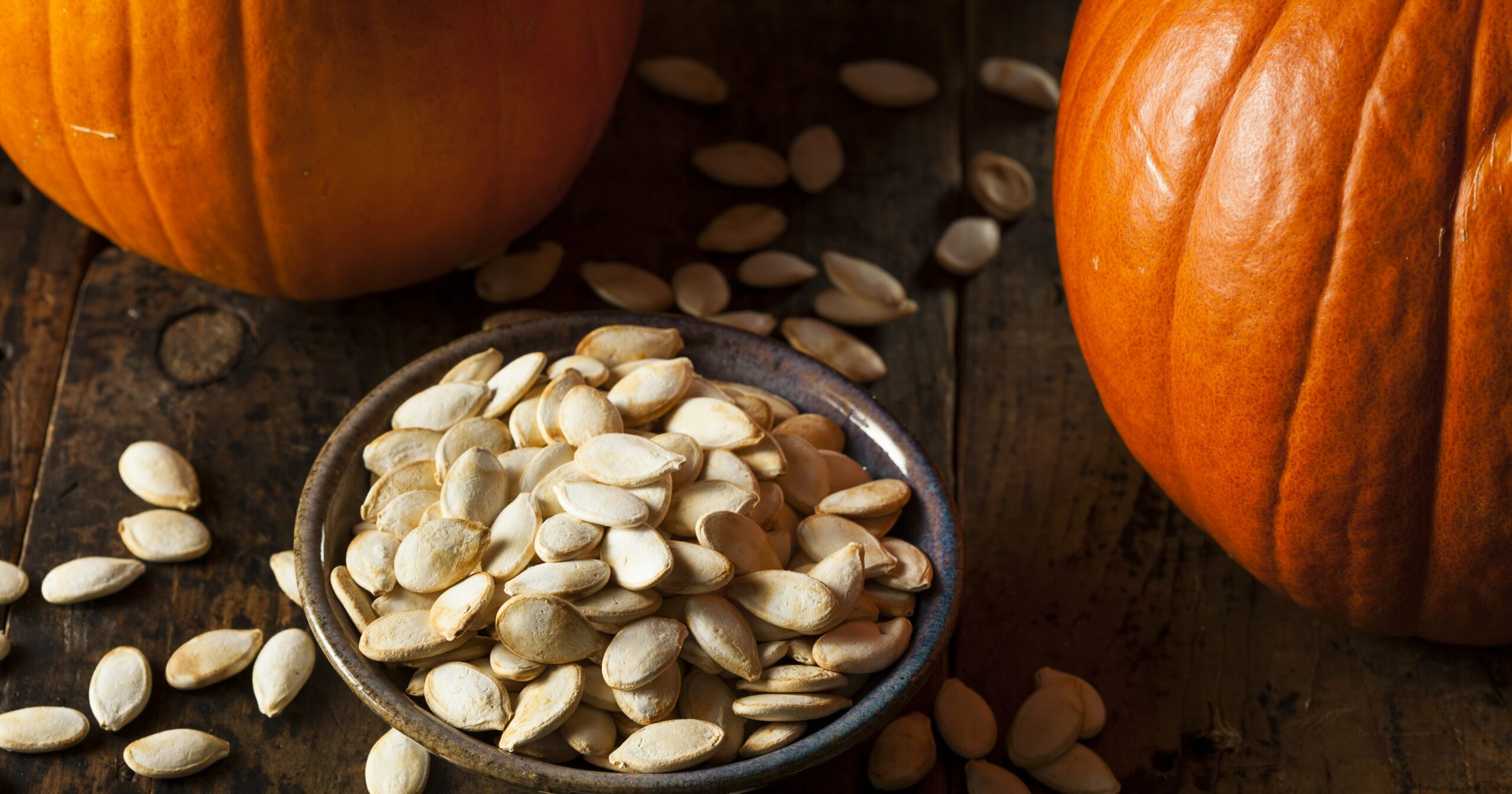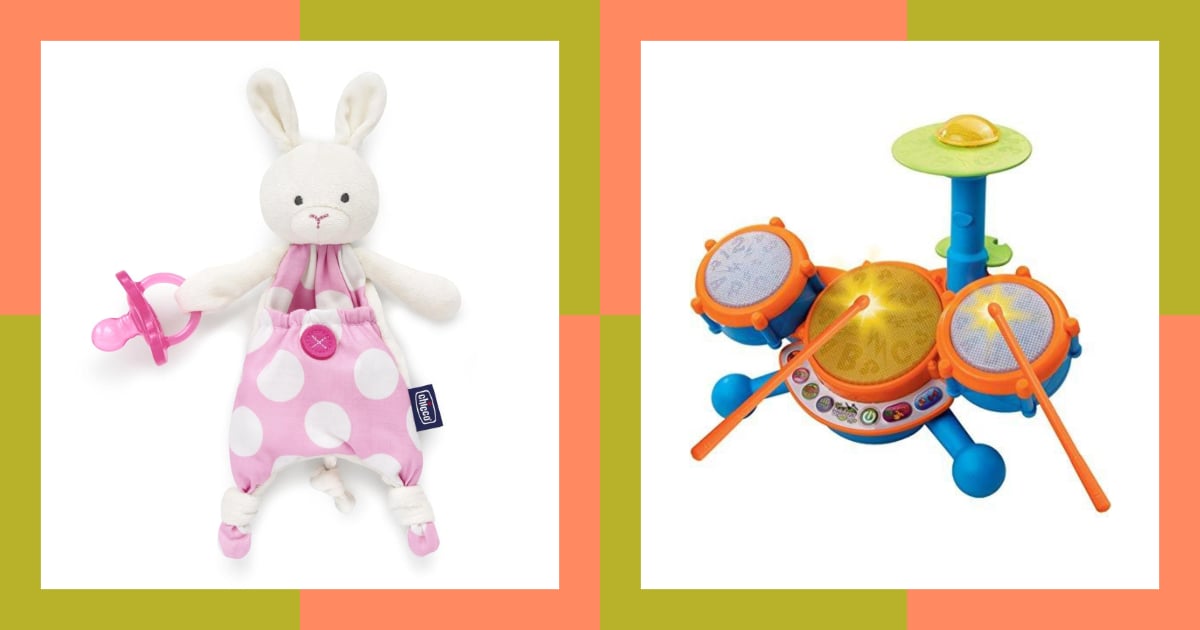From pumpkin spice lattes to pumpkin cake, pumpkin gets plenty of (well-deserved) attention, especially once fall rolls around. But in the throes of carving out jack-o-lanterns and searching for Halloween workouts or more pumpkin spice snacks, we sometimes overlook one of the unsung heroes of the season – at least from a nutritional standpoint. As it turns out, pumpkin seeds are more than just pumpkin guts, and their long list of health benefits might surprise you.
To help us unpack why pumpkin seeds are so good for you, we asked experts about why they’re worth saving post-pumpkin carving. Read on to learn more about the health benefits of pumpkin seeds, including the different varieties, specific nutritional information, and potential risks to keep in mind.
Experts Featured in This Article:
Hailey Crean, MS, RD, CDCES, is a registered dietitian and certified diabetes care and education specialist.
Kelly Jones, MS, RD, CSSD, LDN, is a registered dietitian, board-certified specialist in sports dietetics, and owner of Kelly Jones Nutrition.
Pumpkin Seed Varieties
There are a few different types of pumpkin seeds. Green pumpkin seeds, also known as “pepitas,” are the hulled seeds of certain varieties of pumpkins. They’re typically flat and oval in shape, and rich in antioxidants. They’re also a great source of fiber, protein, and various beneficial minerals. “Scoop” seeds, on the other hand, refer to the seeds you scoop out from most pumpkin varieties. These seeds are usually encased in a white shell that’s slightly curved and round. While they have a similar nutritional profile to green pumpkin seeds, they require a bit more work to consume if you prefer to eat them shelled. But if you enjoy eating them as-is (after they’re roasted), they can still be an easy-breezy snack to enjoy.
Pumpkin Seeds Nutrition
Pumpkin seeds, both green pepitas and scooped seeds, are nutritional powerhouses. They’re packed with essential minerals like magnesium, iron, and zinc, and are a natural source of plant-based protein and fiber, making them a satiating addition to your diet. While both pepitas and scoop seeds share similar nutritional profiles, there are slight differences (although it won’t impact your health immensely if you choose one over the other).
For reference, here are the nutrition facts for one ounce of “scoop” pumpkin seeds, according to the United States Department of Agriculture:
- Calories: 158
- Protein: 8.6 g
- Fat: 14 g
- Carbohydrates: 3 g
- Fiber: 1.7 g
- Calcium: 13 mg
- Iron: 2.5 mg
- Magnesium: 168 mg
- Zinc: 2.2 mg
Pepitas, having no hull, are easier for your body to digest, allowing for quicker absorption of nutrients. Here is what you get when you eat one ounce of pepitas, per the USDA:
- Calories: 160
- Protein: 8 g
- Fat: 14 g
- Carbohydrates: 3 g
- Fiber: 2 g
- Calcium: 0 mg
- Iron: 2.7 mg
- Magnesium: 160 mg
- Zinc: 2 mg
Pumpkin Seed Health Benefits
“Pumpkin seeds pack a lot of nutritional punch in a small volume, [as they’re] rich in micronutrients including magnesium, zinc, and antioxidant vitamin E,” says Hailey Crean, MS, RD, CDCES. Read on for a few of the most notable health benefits:
- Boosts Magnesium: A quarter cup of pumpkin seeds provides more than 40 percent of your daily magnesium, Crean says. This is especially important considering that 48 percent of Americans do not get enough magnesium in their diets, according to a study from the National Health and Nutrition Examination Survey. Magnesium plays an important role in the regulation of blood sugar and blood pressure and is necessary for more than 300 different reactions in the body, Crean explains.
- Helps With Muscle Recovery: Thanks to their magnesium content, pumpkin seeds may also contribute to muscle and bone recovery, says Kelly Jones, MS, RD, CSSD, LDN. She often recommends pumpkin seeds to athletes and active individuals due to their protein and iron content too. “A one-ounce serving of pumpkin seeds offers eight grams of protein, making them perfect as a topping to boost protein intake when eating oats, a salad, or a grain bowl,” Jones says.
- Good Source of Iron: According to Jones, pumpkin seeds are also a great source of iron, “which is important for energy metabolism, and the most common deficiency in women and the active population,” she explains.
- Full of Antioxidants: The antioxidants found in pumpkin seeds also play a significant role in maintaining our overall health. These powerful compounds help to fight off damaging free radicals, support skin health, and may even have anti-cancer properties.
- Promotes Heart Health: In general, pumpkin seeds are also a heart-healthy choice, and may support healthy blood pressure and cholesterol levels, Crean adds.
Are There Any Risks to Eating Pumpkin Seeds?
While pumpkin seeds are typically safe to eat and packed with nutrients, they may pose certain risks for some individuals. For instance, those with allergies to pumpkin seeds may experience symptoms like rash, hives, or difficulty breathing. Additionally, since pumpkin seeds are high in fiber, consuming them in excess may lead to digestive discomfort, such as bloating and gas. Lastly, pumpkin seeds are calorie-dense, so moderation is key to avoiding excessive calorie intake.
So, Are Pumpkin Seeds Good For You?
We can confirm that – generally speaking – pumpkin seeds are indeed good for you. They’re a great source of antioxidants, iron, zinc, magnesium, and many other nutrients. Plus, the shell of the pumpkin seed is packed with fiber, promoting a healthy digestive system, and they contain lots of healthy fats, which are beneficial for heart health. For an accessible source of plant-based protein, try adding these little gems to your next yogurt parfait, salad, or cozy vegan soup for a tasty and nutritious addition to your overall diet.
– Additional reporting by Chandler Plante
Lauren Manaker is an award-winning registered dietitian and freelance writer who is passionate about providing evidence-based nutrition information in a fun and interesting way.
Chandler Plante is an assistant editor for PS Health and Fitness. She has over four years of professional journalism experience, previously working as an editorial assistant for People magazine and contributing to Ladygunn, Millie, and Bustle Digital Group. In her free time, she enjoys finding new ways to rock her 18(!) different eye patches, and making videos about chronic illness, beauty, and disability.




